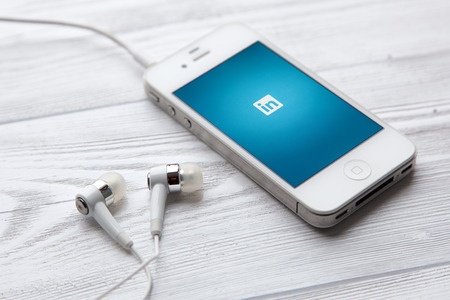3 reasons to integrate LinkedIn in your marketing strategy

LinkedIn is a high-impact communication channel in your overall marketing strategy as the world’s largest professional network, with over 950 million members in more than 200 countries and territories worldwide.
Whether you are an entrepreneur, a business leader or a sales representative, you will find value in this 5-minute blog read as we deeply dive into the top three reasons you should integrate LinkedIn into your marketing strategy.
So, let’s jump right! Here are the three reasons why you should integrate LinkedIn into your marketing.
Reason #1: Positioning
The majority of our clients have more than one product or service. One particular client has over 250 thousand products! This client, and of course, all our other clients ☺, have clearly defined and articulated their value-add on their website. What they do, how, and who they do it for is clear.
But… if you ever experienced the following, you may consider integrating LinkedIn into your overall marketing strategy. Here is the shocking incident: Your client, who truly appreciates the work you do for them, has given a contract to a competitor for something that you can do well! This is called lost wallet share.
LinkedIn is an effective tool to counter lost wallet share by allowing you to better position yourself against potential customers by taking a deeper dive into your overall service offer.
If you are interested in learning more about increasing your customer’s wallet share, please visit our blog on this subject.
So, how do you use LinkedIn to position yourself better and gain wallet share?
Through a well-crafted, annual communication strategy!
A strong communication strategy allows you to identify the moments or events that impact the sale of your products or services, allowing you to position your entire service offering practically and consistently to your entire LinkedIn network.
You can showcase the breadth and depth of your product and service offering by writing, publishing, and sharing posts, testimonials, business cases, product demos, or reviews.
Remember, you are not talking to yourself or your team but to your ideal client or persona. For this positioning to be effective, you must frame them so that the “WIIFM” or “What’s in it for Me” is clear. To effectively position yourself so that your client can see and remember the value-add you bring to the table, you must place your product in a customer-centric fashion and not just a long-winded description of your features and benefits.
Reason #2: Influence
In the great body of work around the Science of Persuasion by Robert Cialdini, he explains how our busy lifestyles lead us to use six shortcuts to guide our decisions. As a component of your overall marketing strategy, a well-crafted LinkedIn strategy can use each of these six shortcuts or principles to better position yourself, your organization, or your products. Let’s look at how you can use these six principles to influence your network and facilitate the growth of your business.
If you want to dive deep into the power of influence, I invite you to look at this video before reading the rest of this blog to understand better how these principles can be applied to LinkedIn (not required) Video – Science of Persuasion.
1- Reciprocity:
People are obliged to give back to others through behaviour, gift, or service they have received first. In the context of LinkedIn, if you follow your clients on LinkedIn and like their posts, comments, or events, they may not overtly like all of your posts, but you can be sure that they will notice when you post something of interest to them. A comment on their post is even better than a like, making the action personalized and unexpected.
2- Scarcity:
People want more of the things they can have less of. Not only should you communicate the benefits of your proposition, but what’s also unique about it and what they stand to lose if they don’t act. This works well if you have an event, conference, or product almost sold out. By leveraging scarcity, you break the status quo and help people move toward action.
3- Authority:
People will follow the lead of credible experts. This is where LinkedIn can help you shine! Give referrals and endorsements and ask for referrals and endorsements. Update your job descriptions, the courses you have taken, and any volunteer work you do. Also, creating sound and resonating content can help you showcase your expertise and know-how.
4- Consistency:
People like to be consistent with things they have said or done. Consistency can be activated by looking for and asking for small commitments done in public. A great example of this is adding professionals to your LinkedIn network in a professional and personalized fashion. Consistently asking for and following up on the people in your network can positively impact your ability to get an appointment with a prospect and win a sale over time.
5- Liking:
People prefer to say yes to people they like and trust. There are three critical factors to getting people to like us: a.) we like people who are similar to us; 2.) we like people who pay us compliments; and 3.) we like people who cooperate with us toward mutual goals. A well-designed and optimized LinkedIn profile and posts allow your audience to understand who you are, what you stand for and how you can help them. This concept can also be applied to commenting posts.
6- Consensus:
When uncertain, people will look to the actions of others to determine what action is best for them. If you have ever looked at product reviews before buying – or not – a product, you have seen this concept in action. On LinkedIn, here again, the notion of the power of your network: your likes, recommendations, posts, and shares have a direct impact not only on your immediate network but can positively influence your overall business impact.
Reason #3 – Business Development
LinkedIn is a simple and effective touch point.
There are many different statistics regarding how many touchpoints are required to book an appointment or make a sale. The consensus is that success is achieved between the 5th and the 12th contact (Marketing and sales take patience and perseverance).
LinkedIn is a very effective tool to add to this number of touchpoints. Here are a few suggestions for you:
- Go through your client list and add them to your LinkedIn network;
- After you meet someone at a meeting or networking event, invite this person to join your LinkedIn network. Remember to take the time to write a personalized message. This can even count as an additional touch point;
- Follow your clients and like their posts or their organization’s posts;
- Write a post or share one from your corporate page.
Maximize References.
If I asked you, what would you prefer: doing a cold call or following up on a reference? Which one would you choose? You would select the reference if you are like most people, including me. Here’s how LinkedIn can help proactively ask for references. Identify a company you would like to work with and enter the company’s name in the search bar. LinkedIn will give you a list of names. If you have first-level connections in this company, contact them directly. Otherwise, look at the second level name, click on that person’s profile, and see who you have in common. Then, get this person and ask for an introduction.
If you would like to have personalized LinkedIn training for your team – please give us a call or send us an email!
Category
Share

